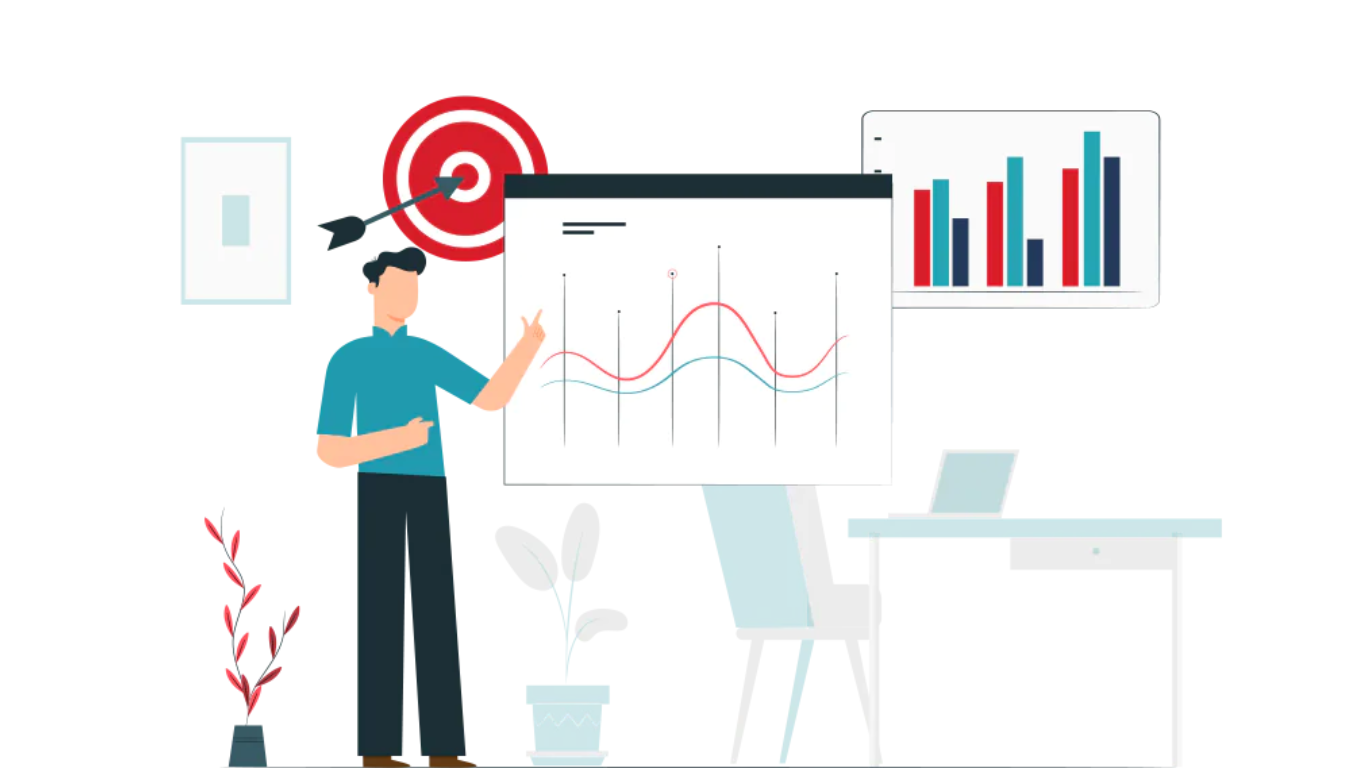What is Mastering the Art of Blogging?
Mastering the art of blogging is like embarking on a delightful journey through the world of words and creativity.
It’s about finding your unique voice and sharing your passion with the world in a friendly and approachable manner.
Imagine sitting down with a cup of coffee, chatting with a friend about your favorite topics, and then translating that conversation into a written form that resonates with your readers.

It’s all about creating content that not only informs but also engages and connects with your audience on a personal level.
So, whether you’re just starting or a seasoned blogger, let’s explore the art of blogging together, in a way that makes it feel like a breeze on a sunny day.
Why Should You Blog?
The art of blogging increases the growth rate for many businesses. It has changed the style of earning for beginners. The Art of Blogging is a platform for the digital presence of businesses. Not only for businesses, but it also provides a platform to share knowledge and entertaining content worldwide.
The art of blogging has grown from a personal online diary to a powerful platform for sharing ideas, building communities, and even generating income.
Mastering the art of blogging requires a combination of creativity, strategy, and dedication. Whether you’re a seasoned blogger or just starting, there are tips and tricks for a profitable blog. Follow these while creating interesting content, growing your audience, and establishing an influential voice in the specific niche.
11 Tips and Tricks to Develop Mastering the Art of Blogging
1. Finding Niche for Creating a Profitable Blog:
Identifying a niche is crucial for successful blogging. Choose a topic that you are passionate about and have expertise in. Specializing in a niche allows you to target a specific audience and stand out in a crowded online space. Explore your interests and find a unique angle to make your blog distinctive.
2. Crafting Engaging Content:
Quality content is the backbone of a successful blog. Develop a writing style that resonates with your audience. Create educational, technical & informational, engaging, and exciting content. The content of the blog is graphical images, information, videos, podcasts, and graphs. These types of content must be relevant to the keyword, title, and meta description.

The quality of the content attracts the reader to spend more time on the page. There are more chances the reader will see other blog posts. Post regular content on the blog to update the audience. Keep in mind these factors before publishing content on the blog that are listed here.
- Focus on producing content that adds value to the readers.
- Solve problems, provide useful information, and share unique perspectives.
- Quality content not only attracts readers but also establishes credibility and trust.
- Craft attention-grabbing headlines that spark curiosity and make readers want to explore further.
- Prioritize quality over quantity. Well-researched, informative, and engaging content keeps readers coming back.
- Ensure that visuals are relevant to the content and reinforce the message.
- Encourage reader interaction with content. Pose questions, include polls, or prompt readers to share their thoughts in the comments.
- Use quizzes or interactive widgets to make the reading experience more engaging.
- Guide readers on what to do next with a clear and compelling call to action. This could include inviting them to comment, share, subscribe, or explore related posts. Call to action encourages reader participation and builds a sense of community.
3. Invest in Professional Design:
Create a visually appealing and user-friendly blog layout. Invest in a professional logo and graphics to enhance brand identity. A well-designed blog not only attracts readers but also contributes to a positive user experience.
4. Understanding SEO:

Search Engine Optimization (SEO) is essential for increasing your blog’s visibility on search engines. With the help of Google Keyword Planner, find niche-related keywords and use those keywords naturally in the content. Optimize meta descriptions, titles, and product images to improve the blog’s ranking. A well-optimized blog not only attracts more readers but also positions the blog as an authority in your niche. Optimize images, improve page loading speed, and enhance user experience. A well-optimized blog increases visibility, attracting organic traffic and potential revenue opportunities.
5. Building a Strong Online Presence:
Promoting blogs across various online platforms is crucial for reaching a wider audience. Use social media, guest posting, and networking related to the niche to expand the reach. Engage the target audience through comments and social media interactions to build a loyal community around the blog.
6. Engage with Your Audience:
Foster a sense of community through comments, social media interactions, and forums. Respond promptly to audience feedback and address their questions and concerns. Building a strong rapport with your audience enhances trust and encourages repeat visits.
7. Build a Strong Email List for Mastering the Art of Blogging:
Offer valuable incentives to encourage visitors to subscribe to the newsletter. Make an email list with regular updates, exclusive content, and promotional offers. A robust email list is a powerful asset for driving traffic and monetizing your blog.
8. Monetization Strategies:
To generate income through blogging, explore various monetization strategies. The monetization strategy includes affiliate marketing of the blog product and content, making sponsored ad content, selling digital items, or giving online tutorial classes. Diversifying the income streams can help to build a sustainable blogging career.
9. Stay Informed and Adapt:
Use the latest industry trends, and study new algorithms and changes in the previous algorithms, tools, and technologies. Adapt the strategies based on analytics data and audience feedback. Staying informed ensures the blog remains relevant and competitive.
10. Utilizing Analytics:
Regularly analyze blog performance using analytics tools. Check the response of the audience to the blog. List the page of the blog or category where the audience stays, and which pages closed immediately after opening the page. This data will guide the blogger in refining the content strategy, identifying growth opportunities, and optimizing the blog for better results.
11. Staying Updated:
The digital landscape is constantly developing, and staying informed about industry trends and technological advancements is crucial. Attend webinars, read industry publications, and participate in relevant forums to stay on top of the latest developments. Adapting to changes in the blogging landscape will keep the content fresh and the audience engaged.
Incorporating these tips and tricks into the blogging strategy, to elevate the blog’s profitability. Consistently delivering valuable content, engaging with the viewers, and diversifying the income streams will not only help to achieve financial success but also establish the blog as a trusted and influential resource in the specific niche.
Free Tools Used for Mastering the Art of Blogging

Mastering the art of blogging depends on the tools. Some tools are available free to use for beginners and some are paid. Bloggers often use a variety of free tools to enhance their writing, design, promotion, and overall blogging experience. These tools can significantly improve efficiency and help create high-quality content. Here are some widely used free tools for blogging:
Tools for Content Creation and Writing | Art of Blogging
Google Docs:
A versatile online word processor that enables collaborative writing and easy sharing.
Grammarly:
A writing assistant that helps bloggers improve grammar, punctuation, and writing style.
Hemingway Editor:
Assists in making writing clear and concise by highlighting complex sentences and common errors.
Graphic Design and Image Development Tools:
Canva:
An easy-to-use graphic design tool with templates for creating blog graphics, social media posts, and more.
Unsplash and Pixels:
Platforms offering high-quality, royalty-free images for blog posts and promotional materials.
SEO (Search Engine Optimization) Tools for Mastering the Art of Blogging:
Google Analytics:
Provides insights into website traffic, user behavior, and content performance.
Yoast SEO:
A WordPress plugin that helps optimize content for search engines, providing real-time suggestions for improvement.
Social Media Management Tools Used in Mastering the Art of Blogging:
Buffer:
A social media scheduling tool that allows bloggers to plan and schedule posts across various platforms.
Hootsuite:
Enables users to manage and schedule social media content, track performance, and engage with audiences.
Keyword Research and Competitor Analysis Tools:
Google Keyword Planner:
Helps bloggers identify relevant keywords for optimizing content and improving SEO.
Ubersuggest:
used to analyze the competitor’s blog, find high search volume and low competition keywords, and rank topics and content ideas from competitors.
Email Marketing Tools:
Mailchimp:
Offers a free plan for email marketing, allowing bloggers to build and manage email lists and send newsletters.
Sender Tool for Mastering the Art of Blogging:
Another option for free email marketing with features like drag-and-drop email creation.
Project Management Tools:
Trello:
A visual project management tool that helps bloggers organize tasks and collaborate with others.
Asana:
Offers a free version for project management, task tracking, and team collaboration.
Stock Video and Music:
Mix kit:
Provides free stock videos, music, and sound effects for bloggers creating multimedia content.
YouTube Audio Library:
Offers a selection of royalty-free music and sound effects for videos.
Website Analytics and Monitoring:
Google Search Console:
Allows bloggers to monitor how their site appears in Google search results and provides insights into website performance.
Pingdom:
Helps monitor website uptime, performance, and page speed.
Collaboration and Communication Tool:
Zoom:
For virtual meetings, interviews, or webinars, allowing face-to-face communication with others in the art of blogging community.
These free tools provide bloggers with an array of resources to enhance their blogging journey. While some tools offer premium features for a fee, the free versions often provide ample functionality for bloggers to create, promote, and optimize their content effectively.

What is the Importance of Mastering the Art of Blogging?
Blogging is an excellent platform for mastering various skills and gaining expertise in a particular field. Whether it’s writing, research, communication, or technical proficiency, blogging offers a dynamic and practical environment for skill development. Here are several reasons why blogging is considered one of the best ways to master various skills:
Writing Proficiency | Art of Blogging
Blogging requires consistent and high-quality writing. Regularly crafting blog posts helps bloggers refine their writing style, develop clarity, and become more effective communicators.
Research Skills:
Successful blogging often involves thorough research to produce accurate and valuable content. Bloggers learn to gather information from reliable sources, critically analyze data, and present well-informed perspectives.
Content Creation and Creativity| Art of Blogging
Blogging encourages creativity in content creation. Bloggers must find innovative ways to present information, engage readers, and make their content stand out in a crowded online space.
SEO Knowledge:
Understanding and implementing Search Engine Optimization (SEO) techniques is crucial for a blog’s visibility. Bloggers learn how to optimize content for search engines, use keywords effectively, and improve their website’s ranking.
Digital Marketing Skills:
Bloggers often become adept at digital marketing strategies. They learn how to promote their content on social media, engage with their audience, and employ various online marketing tactics to increase visibility.
Time Management:
Consistent blogging requires effective time management. Bloggers must juggle research, writing, promotion, and community engagement. Mastering time management in the blogging world translates into valuable skills in other areas of life.
Conclusion:
The importance of blogging spans personal, professional, and societal dimensions. It provides an opportunity for individuals to share, learn, and connect in an increasingly interconnected world. Mastering the art of blogging is an ongoing journey that requires a combination of creativity, dedication, and adaptability. After discovering the specific niche, creating compelling content, understanding SEO, building a strong online presence, exploring monetization strategies, utilizing analytics, and staying updated, I to establish a person to as a successful and influential blogger in the ever-evolving digital landscape.





